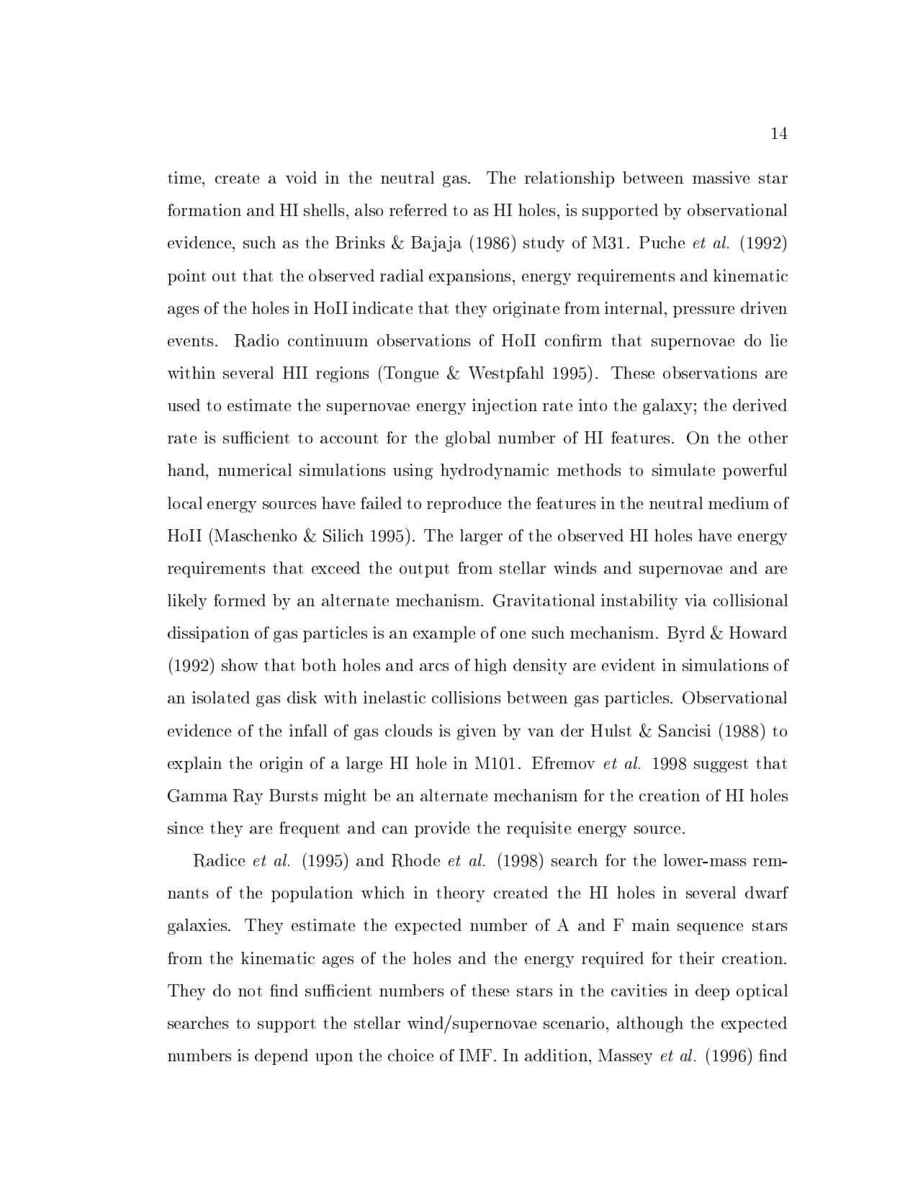Astronomical Applications Department, U.S. Naval Observatory thesis Page 28

14
time, create a void in the neutral gas. The relationship between massive star
formation and HI shells, also referred to as HI holes, is supported by observational
evidence, such as the Brinks & Bajaja 1986 study of M31. Puche
et
al.
1992
point out that the observed radial expansions, energy requirements and kinematic
ages of the holes in HoII indicate that they originate from internal, pressure driven
events. Radio continuum observations of HoII con rm that supernovae do lie
within several HII regions Tongue & Westpfahl 1995. These observations are
used to estimate the supernovae energy injection rate into the galaxy; the derived
rate is su cient to account for the global number of HI features. On the other
hand, numerical simulations using hydrodynamic methods to simulate powerful
local energy sources have failed to reproduce the features in the neutral medium of
HoII Maschenko & Silich 1995. The larger of the observed HI holes have energy
requirements that exceed the output from stellar winds and supernovae and are
likely formed by an alternate mechanism. Gravitational instability via collisional
dissipation of gas particles is an example of one such mechanism. Byrd & Howard
1992 show that both holes and arcs of high density are evident in simulations of
an isolated gas disk with inelastic collisions between gas particles. Observational
evidence of the infall of gas clouds is given by van der Hulst & Sancisi 1988 to
explain the origin of a large HI hole in M101. Efremov
et
al.
1998 suggest that
Gamma Ray Bursts might be an alternate mechanism for the creation of HI holes
since they are frequent and can provide the requisite energy source.
Radice
et
al.
1995 and Rhode
et
al.
1998 search for the lower-mass rem-
nants of the population which in theory created the HI holes in several dwarf
galaxies. They estimate the expected number of A and F main sequence stars
from the kinematic ages of the holes and the energy required for their creation.
They do not nd su cient numbers of these stars in the cavities in deep optical
searches to support the stellar wind supernovae scenario, although the expected
numbers is depend upon the choice of IMF. In addition, Massey
et
al.
1996 nd
